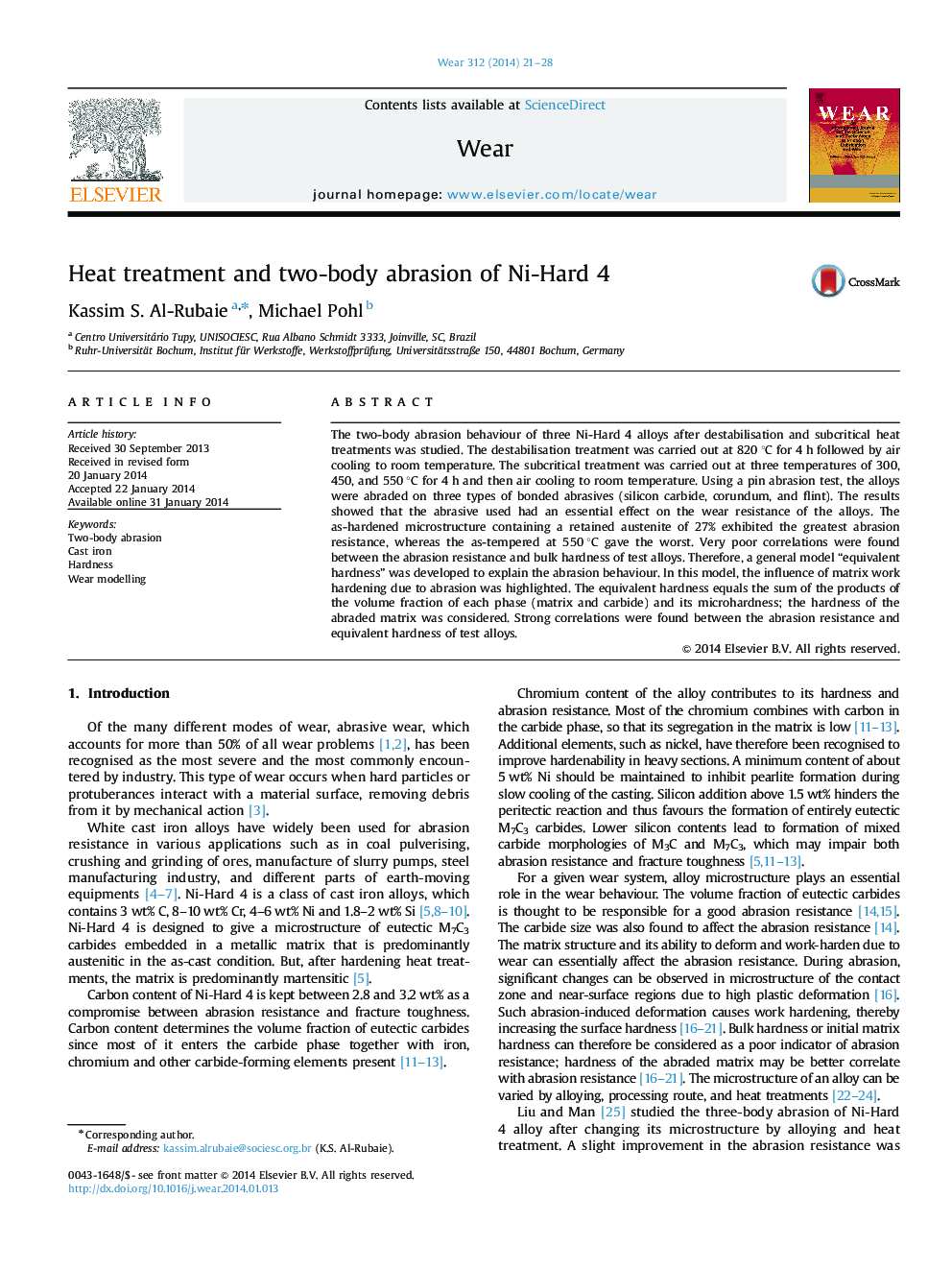| Article ID | Journal | Published Year | Pages | File Type |
|---|---|---|---|---|
| 617394 | Wear | 2014 | 8 Pages |
Abstract
The two-body abrasion behaviour of three Ni-Hard 4 alloys after destabilisation and subcritical heat treatments was studied. The destabilisation treatment was carried out at 820 °C for 4 h followed by air cooling to room temperature. The subcritical treatment was carried out at three temperatures of 300, 450, and 550 °C for 4 h and then air cooling to room temperature. Using a pin abrasion test, the alloys were abraded on three types of bonded abrasives (silicon carbide, corundum, and flint). The results showed that the abrasive used had an essential effect on the wear resistance of the alloys. The as-hardened microstructure containing a retained austenite of 27% exhibited the greatest abrasion resistance, whereas the as-tempered at 550 °C gave the worst. Very poor correlations were found between the abrasion resistance and bulk hardness of test alloys. Therefore, a general model “equivalent hardness” was developed to explain the abrasion behaviour. In this model, the influence of matrix work hardening due to abrasion was highlighted. The equivalent hardness equals the sum of the products of the volume fraction of each phase (matrix and carbide) and its microhardness; the hardness of the abraded matrix was considered. Strong correlations were found between the abrasion resistance and equivalent hardness of test alloys.
Related Topics
Physical Sciences and Engineering
Chemical Engineering
Colloid and Surface Chemistry
Authors
Kassim S. Al-Rubaie, Michael Pohl,
